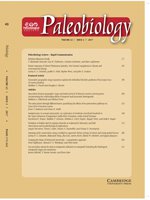Extensive investigation of the close association between biological diversity and environmental temperature has not yet yielded a generally accepted, empirically validated mechanism to explain latitudinal gradients of species diversity, which occur in most taxa. Using the highly resolved late Cenozoic fossil records of four major taxa of marine plankton, we show that their gradients arise as a consequence of asymmetric geographic range expansion rather than latitudinal variation in diversification rate, as commonly believed. Neither per capita speciation nor extinction rates trend significantly with temperature or latitude for these marine plankton. Species of planktonic foraminifera and calcareous nannoplankton that originate in the temperate zone preferentially spread toward and arrive earlier in the tropics to produce a normal gradient with tropical diversity peaks; by contrast, temperate-zone originating species of diatoms and radiolarians preferentially spread toward and arrive earlier in polar regions to produce reversed gradients with high-latitude diversity peaks. Our results suggest that temperature affects latitudinal diversity gradients chiefly by its effect on species' range limits rather than on probabilities of speciation and extinction. We show that this mechanism also appears to operate in various multicellular taxa, thus providing a widely applicable explanation for the origin of latitudinal diversity gradients.
How to translate text using browser tools
6 February 2017
Asymmetric geographic range expansion explains the latitudinal diversity gradients of four major taxa of marine plankton
Matthew G. Powell,
Douglas S. Glazier
ACCESS THE FULL ARTICLE

Paleobiology
Vol. 43 • No. 2
Spring 2017
Vol. 43 • No. 2
Spring 2017




